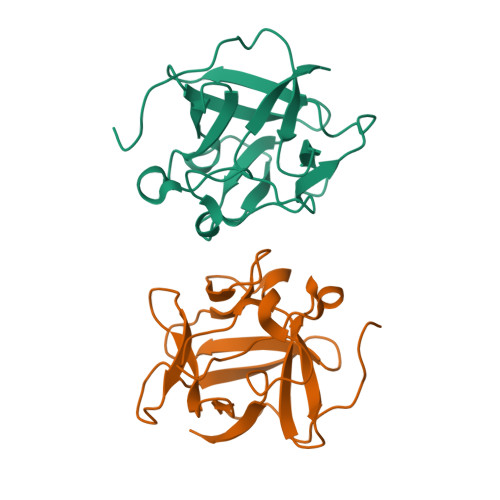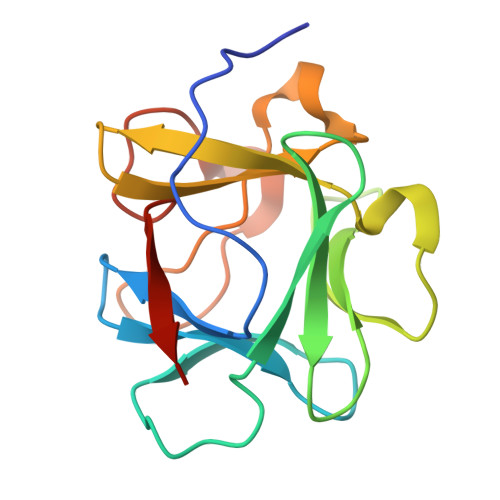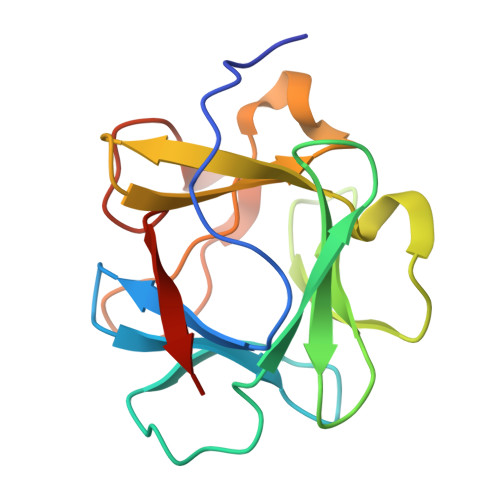Structure and stability effects of mutations designed to increase the primary sequence symmetry within the core region of a beta-trefoil.
Brych, S.R., Blaber, S.I., Logan, T.M., Blaber, M.(2001) Protein Sci 10: 2587-2599
- PubMed: 11714927
- DOI: https://doi.org/10.1110/ps.ps.34701
- Primary Citation of Related Structures:
1JQZ, 1JT3, 1JT4, 1JT5, 1JT7, 1JTC - PubMed Abstract:
Human acidic fibroblast growth factor (FGF-1) is a member of the beta-trefoil hyperfamily and exhibits a characteristic threefold symmetry of the tertiary structure. However, evidence of this symmetry is not readily apparent at the level of the primary sequence. This suggests that while selective pressures may exist to retain (or converge upon) a symmetric tertiary structure, other selective pressures have resulted in divergence of the primary sequence during evolution. Using intra-chain and homologue sequence comparisons for 19 members of this family of proteins, we have designed mutants of FGF-1 that constrain a subset of core-packing residues to threefold symmetry at the level of the primary sequence. The consequences of these mutations regarding structure and stability were evaluated using a combination of X-ray crystallography and differential scanning calorimetry. The mutational effects on structure and stability can be rationalized through the characterization of "microcavities" within the core detected using a 1.0A probe radius. The results show that the symmetric constraint within the primary sequence is compatible with a well-packed core and near wild-type stability. However, despite the general maintenance of overall thermal stability, a noticeable increase in non-two-state denaturation follows the increase in primary sequence symmetry. Therefore, properties of folding, rather than stability, may contribute to the selective pressure for asymmetric primary core sequences within symmetric protein architectures.
Organizational Affiliation:
Institute of Molecular Biophysics and Department of Chemistry and Biochemistry, Florida State University, Tallahassee Florida 32306-4380, USA.


















